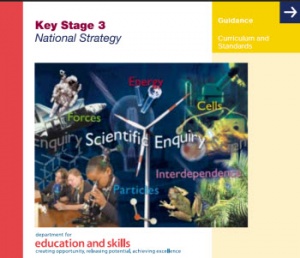Models in Science
About. Models offer a way to advance understanding in science. They help students to 'see' a beating heart or food digestion; the solar system or an ecosystem and they help by visualising abstract ideas such as particle theory or energy transfer. This 3-page guide, 'harvested' from a larger DfES document, begins to classify the models and analogies used around age 13.
Pedagogical content. An opportunity for teachers to discuss the use of modelling(ta) and visualisation(ta) in Key stage 3 science (edit)
| Resource details | |
| Title | Models in Science |
| Topic | [[Topics/Modelling|Modelling]] |
| Teaching approach | [[Teaching Approaches/Visualisation|Visualisation]], [[Teaching Approaches/Modelling|Modelling]] |
| Learning Objectives | to know examples of models used in science lessons. |
| Format / structure | .doc |
| Subject | [[Resources/Teacher Education|Teacher Education]], [[Resources/Science|Science]] |
| Age of students / grade | [[Resources/11-14 years|11-14 years]], [[Resources/Secondary|Secondary]], [[Resources/Higher|Higher]], [[Resources/KS3|KS3]]
|
| Related ORBIT Wiki Resources | See other DfEScience(i) resources |
| Files and resources to view and download | File:Models in Science.doc available in WikiText format here
|
- This resource has been harvested by ORBIT and made into a document that can be edited from the DfES resource "Strengthening teaching and learning in science through using different pedagogies" (ref:0703-2004)
- The original can be downloaded from the 'National Archive' here http://webarchive.nationalarchives.gov.uk/20110809101133/nsonline.org.uk/node/154651.
- We have, in places, edited these resources to remove references to obsolete legislation, guidance, or websites or to otherwise adapt them to our purposes. In particular, we have separated out key elements of the resources into separate 'ideas'.



